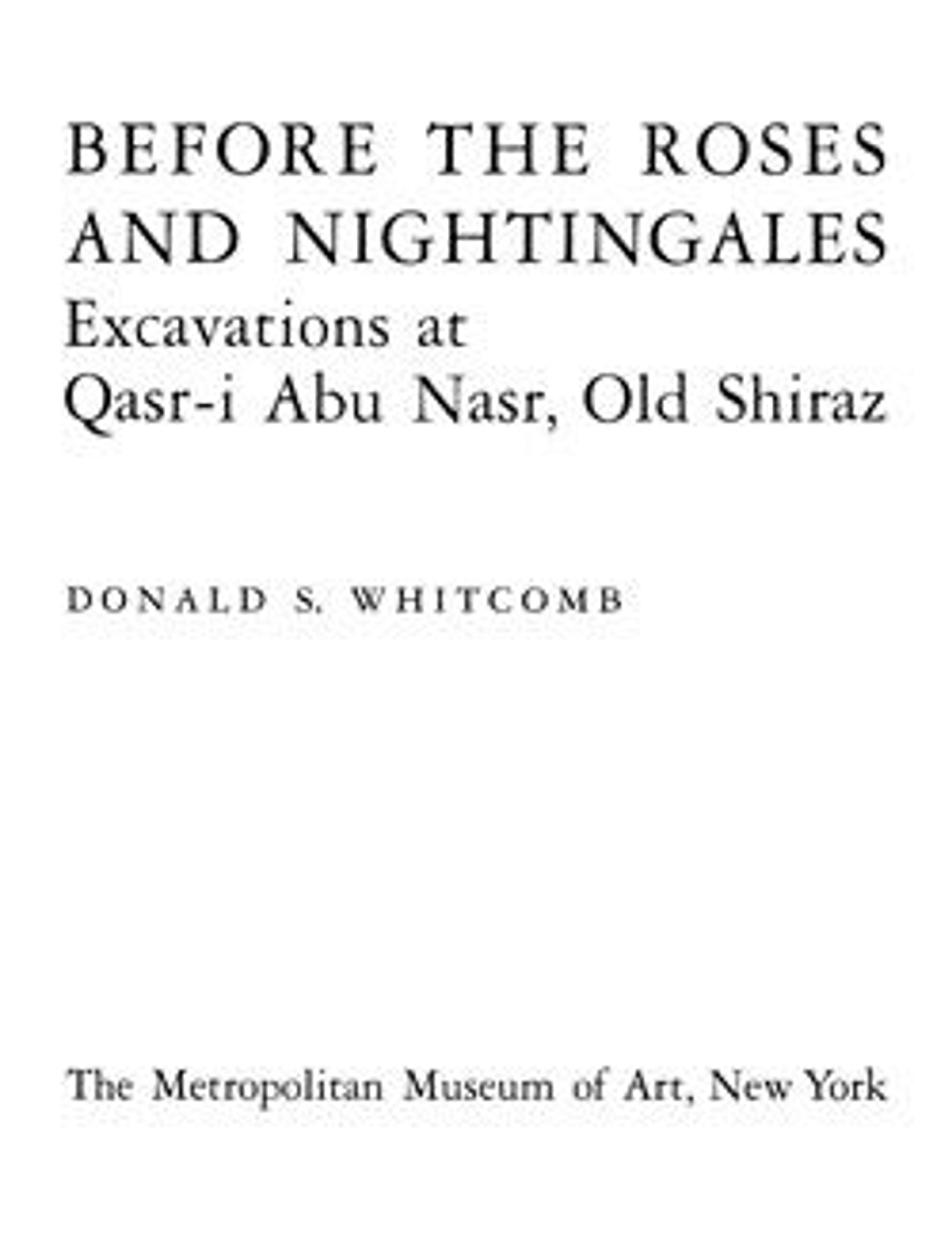Lamp stand
This lamp stand is shaped like a baluster, such as one might find on any modern staircase. It stands on three feet shaped like feline paws. The central shaft is comprised of four flattened spheres alternating with disks. Near the top sits a round tray with a flaring edge. The top of the shaft forms a dull square point. The stand is bronze, and was cast in at least four separate pieces. Originally a bronze oil lamp would have sat on top of the square point, and the tray would have prevented hot oil from dripping on the table or the person using the lamp.
This lamp stand was excavated at Qasr-i Abu Nasr near Shiraz, Iran. It was found in a room, which had been burned, filled with clay bullae bearing impressions of seals. The bullae were spread about the room, suggesting that at the time of the fire they were still attached to documents or objects being stored. The lamp stand was probably used to view the seal impressions, which are best discerned using raking light, and perhaps also to read documents.
Similar lamp stands have been excavated in Algeria, Tunisia, Egypt, Cyprus and Israel. This one, however, was most likely made in the Sasanian Empire, because a number of molds that could be used to cast very similar stands were excavated at Veh-Ardashir, a suburb of the Sasanian capital of Ctesiphon near modern Baghdad. Some stands of this type, and many of the lamps associated with them, bear inscriptions in Greek or Latin that suggest their owners were Christians. It is thus entirely possible that there were Christians living at Qasr-i Abu Nasr, since the Sasanian Persian Empire (c. A.D. 224-651) was generally quite tolerant of religious diversity.
This lamp stand was excavated at Qasr-i Abu Nasr near Shiraz, Iran. It was found in a room, which had been burned, filled with clay bullae bearing impressions of seals. The bullae were spread about the room, suggesting that at the time of the fire they were still attached to documents or objects being stored. The lamp stand was probably used to view the seal impressions, which are best discerned using raking light, and perhaps also to read documents.
Similar lamp stands have been excavated in Algeria, Tunisia, Egypt, Cyprus and Israel. This one, however, was most likely made in the Sasanian Empire, because a number of molds that could be used to cast very similar stands were excavated at Veh-Ardashir, a suburb of the Sasanian capital of Ctesiphon near modern Baghdad. Some stands of this type, and many of the lamps associated with them, bear inscriptions in Greek or Latin that suggest their owners were Christians. It is thus entirely possible that there were Christians living at Qasr-i Abu Nasr, since the Sasanian Persian Empire (c. A.D. 224-651) was generally quite tolerant of religious diversity.
Artwork Details
- Title:Lamp stand
- Period:Sasanian
- Date:ca. 6th–7th century CE
- Geography:Iran, Qasr-i Abu Nasr
- Culture:Sasanian
- Medium:Bronze
- Dimensions:Height: 16.50 in. (41.91 cm); Diameter of top: 4.75 in. (12.07 cm); Width: 6.75 in. (17.15 cm)
- Credit Line:Rogers Fund, 1934
- Object Number:34.107.1
- Curatorial Department: Ancient West Asian Art
More Artwork
Research Resources
The Met provides unparalleled resources for research and welcomes an international community of students and scholars. The Met's Open Access API is where creators and researchers can connect to the The Met collection. Open Access data and public domain images are available for unrestricted commercial and noncommercial use without permission or fee.
To request images under copyright and other restrictions, please use this Image Request form.
Feedback
We continue to research and examine historical and cultural context for objects in The Met collection. If you have comments or questions about this object record, please contact us using the form below. The Museum looks forward to receiving your comments.
